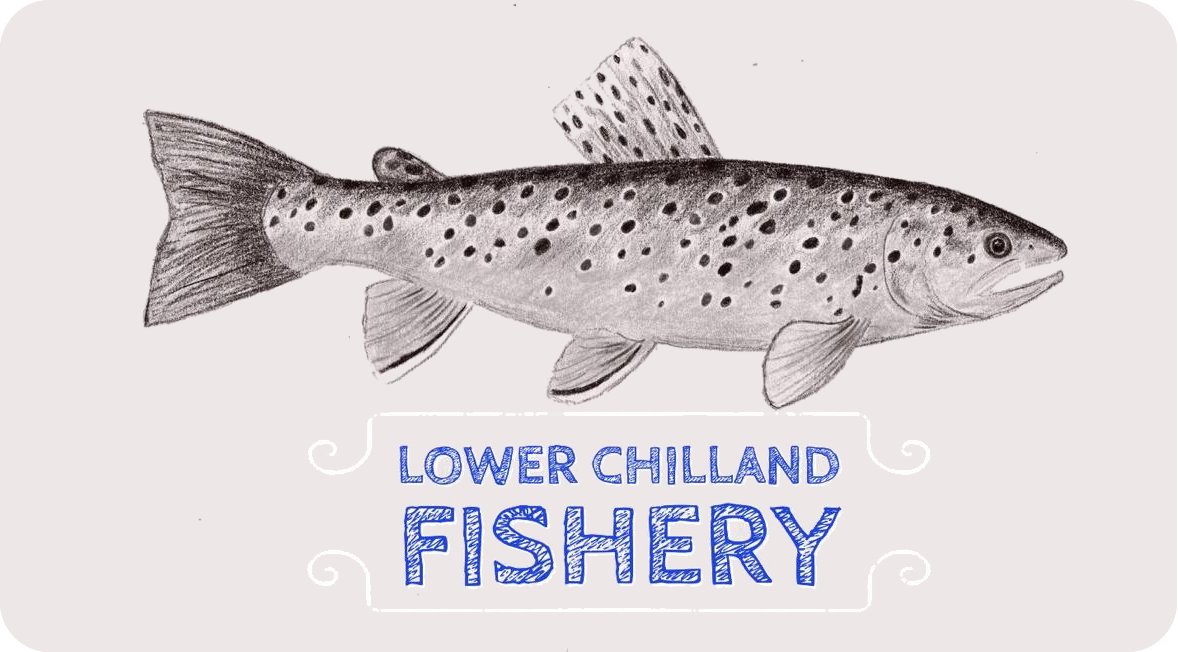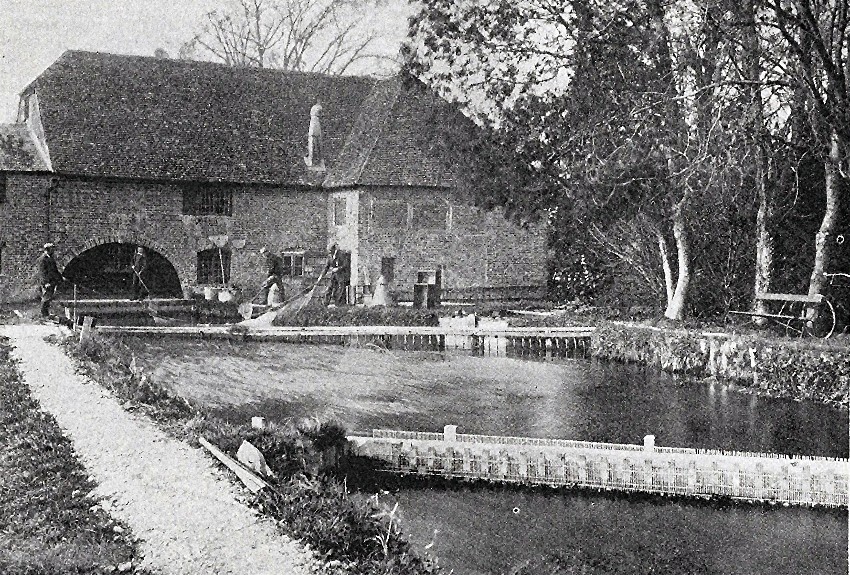The Fishing
Lower Chilland Fishery offers challenging dry fly fishing for brown trout over 800 yards of double bank fishing.
Each stretch has different qualities giving a good variety with white water pools, faster riffled stretches and deep pools, providing excellent sport.
Guests will also have the benefit of a central Fishing Lodge (The Eel House) and BBQ area.
Fishing upstream with dry fly, emerger or nymph is the mandatory method, thus respecting the sporting traditions of chalk stream fly fishing. After the trout season closes, and until the end of the coarse fishing season, other methods can be used
The fishery has always urged its Members to practice, sensitive and careful handling, as well as be strictly ‘catch and release’.
Regular stocking is carried out on the fishery using only the highest quality brown trout ranging up to 4lbs from our approved source; “The Leckford Estate” . The fishery’s policy is towards sustainability and maintaining the natural habitat, therefore we only stock with triploid brown trout from a pre-approved source.
The average trout weighs in at just over 1lbs with a few fish between 2-5lbs later in the season.
The ecology of the water meadows is extremely rich, and provides the right environment for the abundant fly hatches. This commences with the Grannom, followed by the Hawthorn and Mayfly. From June onwards we experience prolific hatches of Blue Winged Olive providing excellent late evening sport. During August and September Sedges and Daddy Long Legs prove to be the favourites, which is typical of a Hampshire chalk stream.
Popular flies include: Greenwells Glory; Grey Wulff; Black Gnat; Adams; Walkers Red Sedge; Ginger Quill; B.W.O.; Lunns Particular; Iron Blue Dun; Sherry Spinner.
For the days when the fishing conditions are slow, subject to the keeper’s discretion the use a nymph is allowed. However, spinning reels and the use of baited hooks is strictly forbidden.
The River Itchen
The River Itchen is a beautiful chalk stream which flows for approximately 28 miles from mid-Hampshire to Southampton. The river has international importance and is designated as a Site of Special Scientific Interest (SSSI) due to its high-quality habitats which support a range of protected species including the water crowfoot, brown trout, the endangered water vole, otter and white-clawed crayfish. Kingfishers, butterflies and dragonflies are also frequently spotted along the banks.
The source of the Itchen is situated in Cheriton, near Alresford, and flows down to the historic city of Winchester passing through nature reserve Winnall Moors, and Winchester City Mill.
A walk along the River Itchen will provide a fantastic opportunity to not only explore the ancient capital of England but sample some of the finest eateries in Hampshire. Visitors to Winchester can escape the bustle of the city centre and take a leisurely walk along its banks which offer excellent views of the city’s medieval defences.
For much of its length the River Itchen is divided into two or more separate channels running parallel to each other, including the Itchen Navigation. This is a modified part of the river and a former canal which runs for just over 10 miles from Wharf Bridge in Winchester to Woodmill in Southampton. A public footpath called the Itchen Way runs next to the Navigation along its entire length.
The Itchen Navigation was constructed in the late 17th century to allow the transport of cargo on barges between Winchester and Southampton. It was also economically important for irrigating the extensive water meadow system along the valley floor which is now used to grow Hampshire’s famous watercress. Locks, sluices and hatches were built to control the water levels and manage flow to the adjacent water meadows and mills. The remnants of these can still be found today. The Navigation was used until 1869 when the London to Southampton railway was constructed.
The river is managed by riparian owners with the use of water regulated by the Environment Agency.
Wildlife
Full of wild brown trout, grayling, perch, eels and other coarse fish which come into it from the River Itchen, our stretch is a typical shallow Hampshire chalk stream.
Here a short rod is required and the angler must tread stealthily to avoid spooking any fish they come across. We recommend the tradional approach of casting upstream of anything you see and let the fly drift down towards the fish.
We have small grayling which run to 0.5lb plus wild brown trout up to 5lb.
Without a doubt a stalking session along the carrier can provide a relaxing and interesting change from fishing the stillwater lakes, particularly in warmer weather when the cool of the trees is most welcomed.

